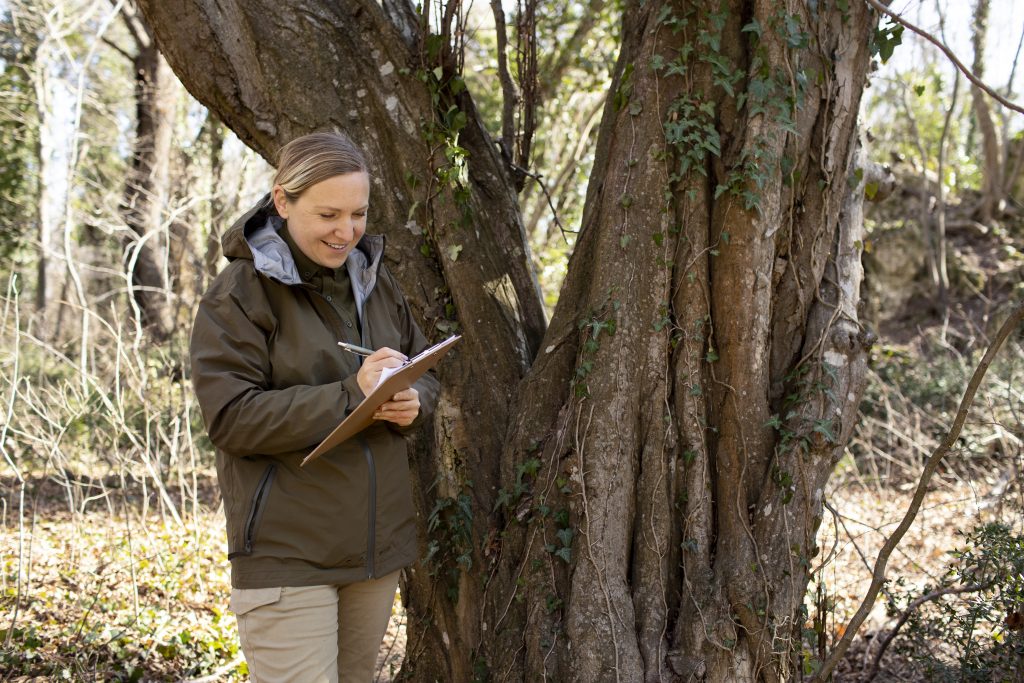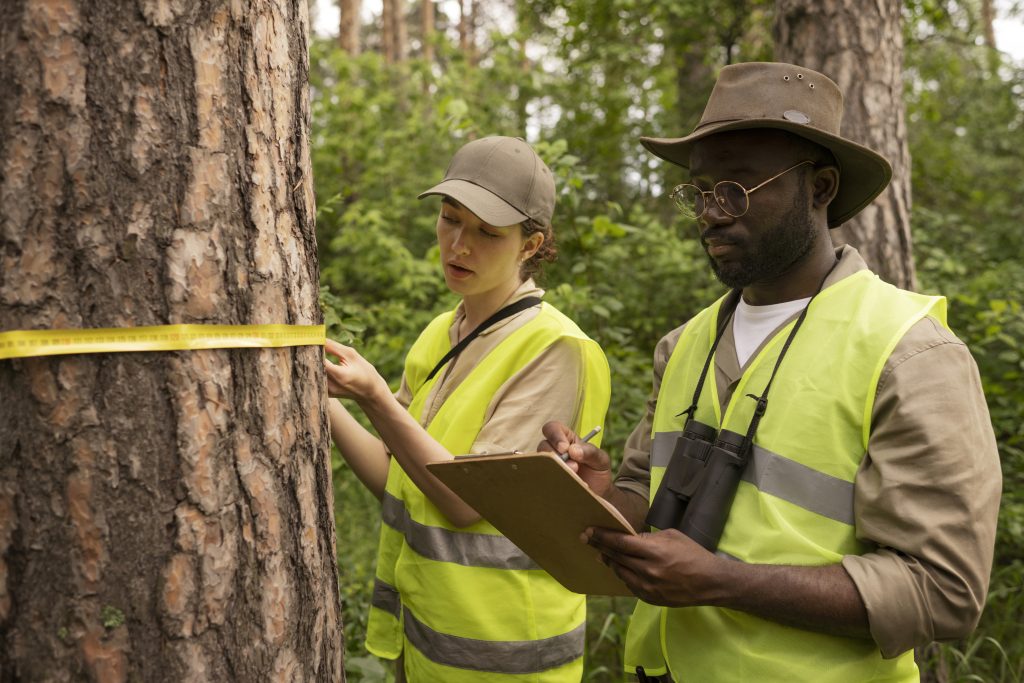Trees are majestic living beings that grace our landscapes, provide shade and beauty, and contribute significantly to the environment. Just like us, trees can experience health issues. A tree health assessment is a crucial process for ensuring the well-being of your trees and safeguarding your property. In this comprehensive guide, we’ll equip you with all the knowledge you need about tree health assessments in 2024.
What Is Tree Health Assessment?
Tree health assessment involves the systematic evaluation of various factors that affect the overall wellness of a tree. It encompasses a holistic approach that considers physiological, environmental, and biological aspects of tree health. By examining key indicators of tree health, certified arborists can gain valuable insights into the condition of a tree and identify potential issues before they escalate.
Signs of Tree Sickness and Pests
Ensuring your trees stay healthy involves spotting signs of sickness and pests early. By catching these signs soon, you can take steps to tackle problems and keep your trees thriving. Here are some common signs to keep an eye out for:
- Wilting Foliage
- Discolored Leaves
- Abnormal Growth Patterns
- Premature Leaf Drop
- Visible Pests or Damage
- Cankers, Lesions, or Exudates
- Weakness or Instability
Key Indicators of Tree Health
Understanding the key indicators of tree health is crucial for an effective assessment. These indicators provide the vital signs of a tree’s condition and can guide further action or treatment. Some of the most important indicators include:
Foliage Quality
The foliage of a tree serves as its primary site for photosynthesis, the process by which trees convert sunlight into energy. Healthy foliage is characterized by vibrant green coloration, turgid leaves, and consistent growth patterns.
Conversely, unhealthy foliage may exhibit symptoms such as wilting, discoloration, or premature leaf drop, indicating underlying stressors such as nutrient deficiencies, water imbalance, or pest infestations.
Structural Stability
The structural integrity of a tree is essential for its stability and safety, especially in urban environments where trees coexist with human infrastructure. Signs of structural instability, such as leaning, splitting branches, or hollow cavities within the trunk, pose significant risks of limb failure or tree collapse.
Regular assessment of structural stability allows arborists to identify possible hazards and implement preventive measures such as pruning or cabling to mitigate risks and ensure public safety.
Bark Integrity
The bark of a tree plays a vital role in protecting the underlying vascular tissues from mechanical damage, pathogens, and environmental stressors. A healthy tree bark is typically intact, with smooth texture and uniform coloration.
Conversely, signs of bark damage, such as cracks, lesions, or abnormal growths, may indicate fungal infections, insect infestations, or physical injuries that compromise the tree’s ability to transport water and nutrients.
Root System Health
The root system serves as the anchor and lifeline of a tree, providing stability, anchorage, and nutrient absorption from the soil. Healthy root systems are characterized by extensive branching, firm anchorage, and minimal signs of decay or damage.
Symptoms of root system dysfunction, such as reduced foliage density, root rot, or surface soil heaving, may indicate underlying issues such as soil compaction, poor drainage, or root pathogens that impair the tree’s ability to uptake water and nutrients.
What To Expect During The Tree Health Assessment Process

The process of tree health assessment can vary based on the size and type of the tree, as well as the specific concerns being addressed. However, a typical assessment follows a structured approach to ensure a thorough evaluation. Here’s what to expect during a tree health assessment:
Initial Consultation
The procedure often begins with an initial consultation where you discuss your concerns with a local certified arborist. This may include historical health issues, recent weather events, or changes to the surroundings that could have affected the tree.
Visual Inspection
The arborist will conduct a comprehensive visual inspection of the tree. This includes looking at the tree’s overall form and structure and assessing the condition of the leaves, branches, bark, and visible roots. Tools like binoculars may be necessary to inspect higher branches.
Detailed Examination
Following the visual inspection, more detailed examinations are often needed. This might involve using specialized equipment to test the soil quality around the tree, checking for moisture levels, and possibly even taking samples for laboratory analysis to test for diseases or nutrient deficiencies.
Assessment of Environmental Factors
The surrounding environment of the tree is crucial for its health. The arborist will evaluate factors such as the tree’s exposure to sunlight, its proximity to other plants or structures, and any potential exposure to harmful chemicals or pollutants.
Reporting and Recommendations
After completing the assessment, the arborist will compile a detailed report that includes the health status of the tree, any issues detected, and recommendations for treatment or management. This may include suggestions for pruning, soil management, pest control, or other interventions to restore or maintain the tree’s health.
Importance Of Regular Tree Health Assessment
Regular tree health assessment is essential for maintaining the vitality and resilience of urban forests, parks, and landscapes. By conducting periodic evaluations, property owners, arborists, and landscape professionals can detect potential problems early on and implement appropriate measures to reduce risks and preserve tree health. Moreover, proactive tree care practices, such as proper pruning, watering, and soil management, can enhance tree vigor and minimize susceptibility to diseases and pests.
FAQs
Can tree fungus infect humans?
Yes, certain types of fungi associated with trees can infect humans. One notable example is Sporothrix schenckii, the fungus responsible for a condition known as sporotrichosis, often referred to as “rose gardener’s disease.” This fungus is commonly found in the environment, particularly in soil, moss, and decaying vegetation, including wood and tree bark.
How often should tree health assessments be conducted?
The frequency of tree health assessments depends on factors like tree species, age, location, and environmental conditions. As a general guideline, it’s recommended to assess tree health at least once a year, preferably in the early spring or late fall when trees are dormant.
Can a tree recover from disease?
Yes, trees can recover from diseases if conditions are right. Factors like the type of disease, the tree’s species, and environmental factors play a role. Sometimes, with professional care and treatment, trees can fight off infections and heal. But if a disease is too severe or widespread, it might be tough for the tree to bounce back.
Final Thoughts
Maintaining tree health is essential for protecting our environment. By conducting regular tree health assessments, we can ensure that our natural landscapes remain vibrant and robust for future generations. For expert guidance on tree health assessment and property tree care, reach out to Audet Enterprises. Keep in mind that the actions you take for your trees now will shape tomorrow’s landscape. Contact us today!


